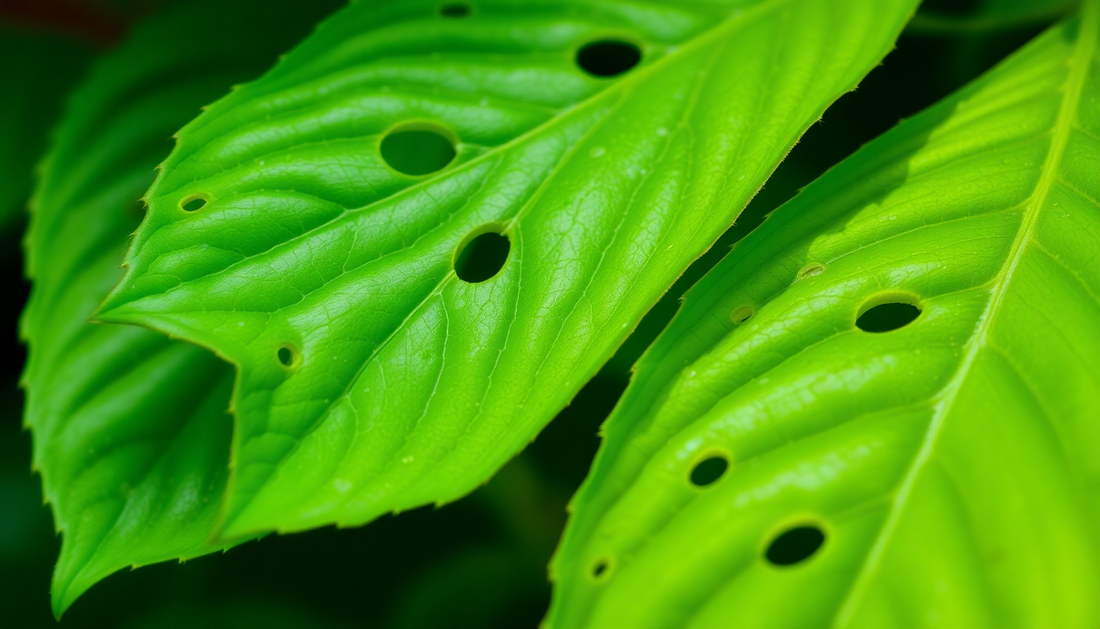
What Are These Tiny Holes on My Indoor Plant Leaves?
As a plant enthusiast, you may have noticed those pesky little holes appearing on the leaves of your beloved indoor plants. These unsightly blemishes can be concerning, leaving you wondering what's causing the damage and how to address it. Fear not, fellow gardener! In this comprehensive guide, we'll delve into the common culprits behind these tiny holes and provide you with the knowledge and tools to keep your indoor plants thriving.
Understanding the Causes of Leaf Holes
Leaf holes can be caused by a variety of factors, ranging from pests to environmental stressors. Let's explore the most common culprits:
Insect Infestations
One of the primary reasons for leaf holes is the presence of unwelcome insect guests. These tiny critters can feast on your plant's foliage, leaving behind a trail of perforations. Some of the most common culprits include:
- Aphids: These small, sap-sucking insects can cause small, irregular holes as they feed on the plant's leaves and stems.
- Spider Mites: These tiny arachnids leave behind a distinctive pattern of tiny, round holes as they pierce the leaf surface to extract the plant's fluids.
- Thrips: These slender insects can cause elongated, narrow holes as they scrape the leaf surface.
- Caterpillars: The larvae of certain moth and butterfly species can chew through leaves, leaving behind larger, more irregular holes.
Environmental Factors
In some cases, leaf holes may not be caused by pests, but rather by environmental stressors. These can include:
- Mechanical Damage: Accidental bumps, scrapes, or tears can lead to holes in the leaves.
- Nutrient Deficiencies: A lack of essential nutrients, such as nitrogen or magnesium, can cause the leaves to become weak and susceptible to damage.
- Excessive Sunlight: Intense, direct sunlight can scorch the leaves, leading to the formation of holes.
- Improper Watering: Both underwatering and overwatering can stress the plant and make it more vulnerable to leaf damage.
Identifying the Culprit
To effectively address the issue of leaf holes, it's crucial to identify the underlying cause. Here are some tips to help you pinpoint the problem:
- Inspect the Leaves: Carefully examine the leaves, looking for any signs of insects, such as small, moving specks or webbing. Also, check for any patterns or shapes in the holes that may indicate the responsible pest.
- Look for Other Symptoms: In addition to the leaf holes, keep an eye out for other signs of plant distress, such as wilting, discoloration, or stunted growth. These can provide valuable clues about the root cause.
- Consider the Environment: Evaluate the growing conditions of your plant, including the amount of light, water, and nutrients it's receiving. Imbalances in these factors can contribute to leaf damage.
- Consult Plant Care Resources: If you're unsure about the cause, don't hesitate to consult reliable plant care resources, such as gardening forums, plant identification apps, or your local nursery or extension service.
Treating and Preventing Leaf Holes
Once you've identified the culprit behind the leaf holes, it's time to take action. Here are some effective strategies to treat and prevent further damage:
Addressing Insect Infestations
- Manually Remove Pests: For small infestations, you can gently wipe or brush the leaves to remove any visible insects.
- Use Insecticidal Sprays: If the infestation is more severe, consider using a gentle, plant-safe insecticidal spray to target and eliminate the pests.
- Introduce Beneficial Insects: Releasing natural predators, such as ladybugs or lacewings, can help control the population of harmful insects.
- Maintain Plant Health: Keeping your plants well-nourished and stress-free can make them less susceptible to pest infestations.
Addressing Environmental Factors
- Adjust Lighting: If excessive sunlight is the culprit, move your plant to a more shaded location or provide some light filtering.
- Optimize Watering: Ensure that you're following the appropriate watering schedule for your plant's needs, avoiding both under- and overwatering.
- Fertilize Properly: Apply a balanced, slow-release fertilizer to provide your plant with the necessary nutrients.
- Protect from Mechanical Damage: Be mindful of your plant's placement and handle it gently to avoid any accidental bumps or scrapes.
By addressing the root cause of the leaf holes and implementing the appropriate treatment and prevention strategies, you can help your indoor plants thrive and maintain their lush, healthy appearance. Remember, a little diligence and care can go a long way in keeping your beloved greenery in top shape.
Conclusion
Dealing with those pesky leaf holes can be a frustrating experience, but with the right knowledge and tools, you can get to the bottom of the issue and keep your indoor plants happy and healthy. By understanding the common causes, identifying the culprit, and taking the necessary steps to address the problem, you'll be well on your way to enjoying a vibrant, hole-free indoor garden. Happy planting!







No comments